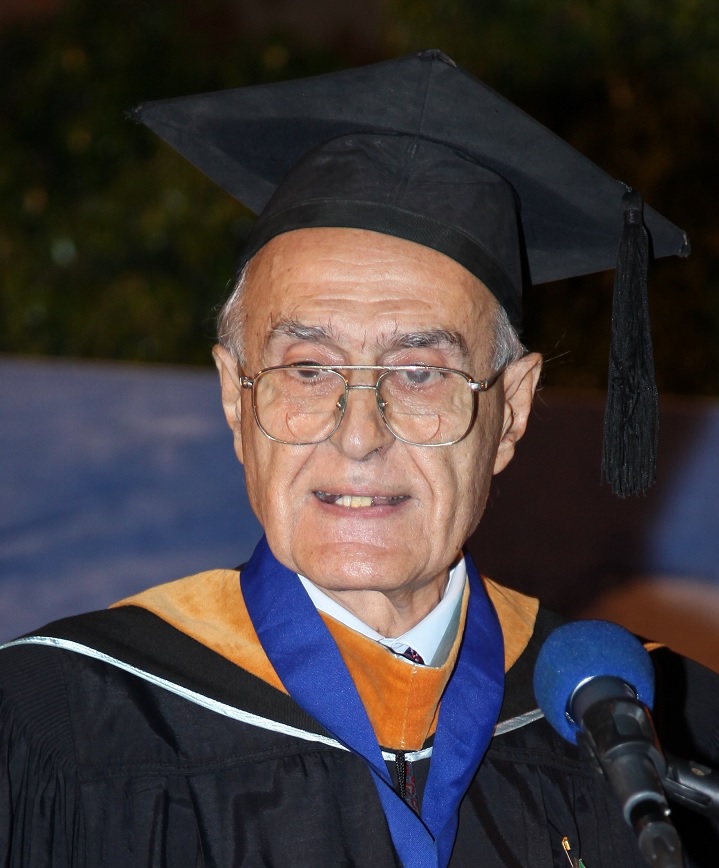
517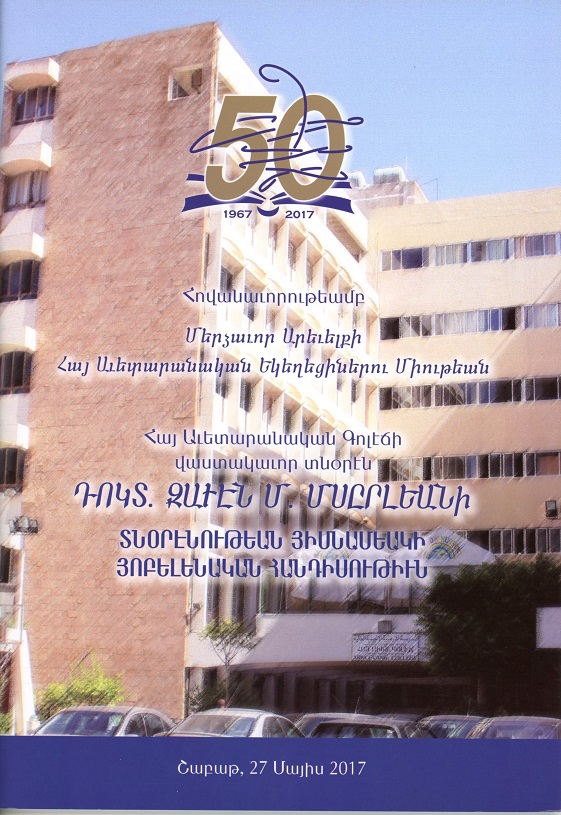 Rangement général
 | | Jubilé cinquantenaire du Dr Zaven Messerlian (1967-2017) |
| Titre : | Jubilé cinquantenaire du Dr Zaven Messerlian (1967-2017) / auteur(s) : Zaven M. MESSERLIAN - |
|---|
| Editeur : | Comité du Jubilé |
|---|
| Année : | 2017 |
|---|
| Imprimeur/Fabricant : | |
|---|
| Description : | 21 x 29 cm, 48 pages, couverture illustrée en couleurs |
|---|
| Collection : | |
|---|
| Notes : | |
|---|
| Autres auteurs : | |
|---|
| Sujets : | |
|---|
| ISBN : | |
|---|
| Lecture On-line : | non disponible |
|---|
Commentaire : |
522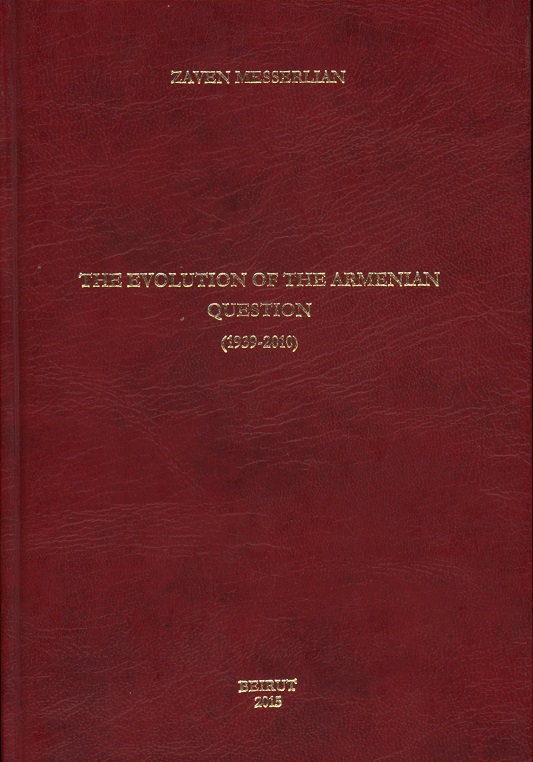 Rangement général
 | | The evolution of the Armenian question (1939-2010) |
| Titre : | The evolution of the Armenian question (1939-2010) / auteur(s) : Zaven M. MESSERLIAN - |
|---|
| Editeur : | Zaven Messerlian |
|---|
| Année : | 2015 |
|---|
| Imprimeur/Fabricant : | Chemaly & Chemaly - Beirut, Lebanon |
|---|
| Description : | 17 x 24 cm, 362 pages, Index pages 349-357 |
|---|
| Collection : | |
|---|
| Notes : | Translated from Armenian into English by Maral O. Sarkissian Kaloustian |
|---|
| Autres auteurs : | |
|---|
| Sujets : | |
|---|
| ISBN : | |
|---|
| Lecture On-line : | non disponible |
|---|
Commentaire :AUTHOR'S NOTEMy book entitled "About the Armenian Question" (in Armenian) was published in 1978, by the "Mardiros Darakjian Foundation of the Tekeyan Cultural Association".
The book had three separate sections, The question of Kars-Ardahan in the light of Turkish Soviet Relations (1939-1977, "The Question of the Internal territories", and "The Kurds of Turkey and the Armenian Question". The book won "The Haygashen Ouzounian award". The thousand copies published were'sold out within a year.
After the publication of "About the Armenian Question", we received a number of letters, two of which from Karekin II, Catholicos of See of Cilicia (in those days, Coadjutor Catholicos), and from Mr. Alex Manouguian, president of the Armenian General Benevolent Union. These letters follow this note.
One of our former students, now a businessman Mr. Hovig Kurkjian, known for his benevolent donations both in Armenia and the Diaspora, proposed to have the book re-published. Based on that, we decided to give the first chapter of "About the Armenian Question" updating it to 2010, under the general tide of "The Evolution of the Armenian Question". In it we have basically discussed the matter of Kars and Ardahan in light of Turkish-Soviet Relations, and the evolution of the Armenian Question after the independence of Armenia until 2010, as a marginal subject in Turkish Armenian relations. It is true that the subject of Mountainous Karabagh is part of the Question, and it can be the subject of a different book.
In the Author's Note section of our book "About the Armenian Question", published in 1978, we had mentioned that all researches published in said book, which dealt with the latest developments of the Armenian Question had already been published previously in Armenian periodicals. The research of "Kars-Ardahan in light of the Turkish-Soviet relation 1939-1977", has basically been published in English in the Annals of the Lebanese Association of Armenian University Graduates Armenian .Studies in 1973 entitled "The Question of Kars and Ardahan (pp. 53-94). The subject matter covered the time period of 1939-1953. In "About the Armenian Question", it was published in Armenian with newer addendums.
We can mention here that we have largely used archives obtained from the British Foreign Office 1939-1945. Having approached British historian Christopher Walker for his input, he was kind enough to respond in kind and sent us copies of British Foreign office documents dealing with the Armenian Question in the years 1946-1947, which had not been available in 1972, when we were researching said documents.
In the second section of our book "The Question of Kars-Ardahan in light of Turkish Soviet relations, 1939-1977", we had included the Armenian territorial issues in the time period of 1953-1977. That had been published in an abridged form in our research entitled "The Question of Western Armenia's occupied territories, 1921-1971", published in volume II of the Armenological Review of the Haigazian College (now University), Beirut 1971, pp. 17-44. The time frame of the subject had been expanded until 1977. In this book, we supply the necessary with limited addendums.
The events covering the time period from 1978-2011 have been published in periodicals. Zartonk New Year Special edition of December 31, 1979, published "The road of pursuing the Armenian Question from 1978-1979". Zartonk New Year Special edition of January 1, 1983 published "Turkish Counteraction to the efforts of having Armenian Genocide recognized in 1982". Zartonk New Year Special of January 1, 1985 published "The evolution of the Armenian Question on a diplomatic level 1984". Zartonk New Year Special edition published on January 1, 1985 "The Evolution of the Armenian Question on its 70th commemorative year". Khosnag, year XXVIII, volume 12th, published on December 1985 pp. 10-16 "The Evolution of the Armenian Question on a diplomatic level in 1986", Zartonk Special, January 1, 1987. Zartonk Special edition, January 1, 1988 edition published "The Evolution of the Armenian Question in 1987". Haigatyan Armenological Review, Beirut, 1995, pp. 235-299, published "The Evolution of the Armenian Question 1988-1993". Ararad Special edition, January 1, 2004 published "The Evolution of the Armenian Question 1994-2003". Ararad Special New Year edition continued publishing the Evolution researches until, and including, 2010. We have specifically modified the section dealing with the time period 1978-1988 with new additional texts. Likewise modifications have been done to the time period of 1986-2010 and have sectioned it into chapters.
Our special thanks to Mr. Hovig Kurkjian for undertaking the expenses for publishing the Armenian edition of this book.
The English translation and the printing of this book are funded by Mr. Raffy Manoukian, a former student of ours and current benefactor to whom I extend special thanks. |
521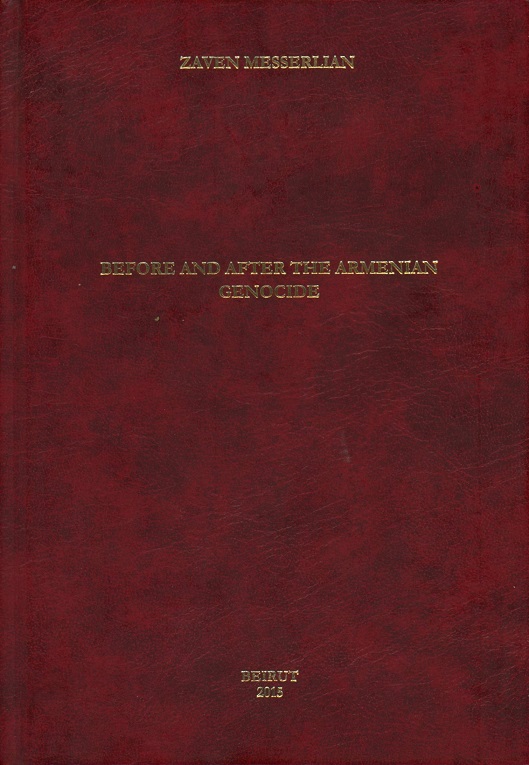 Rangement général
 | | Before and after the Armenian genocide |
| Titre : | Before and after the Armenian genocide / auteur(s) : Zaven M. MESSERLIAN - |
|---|
| Editeur : | Zaven Messerlian |
|---|
| Année : | 2015 |
|---|
| Imprimeur/Fabricant : | Chemaly & Chemaly - Beirut, Lebanon |
|---|
| Description : | 17 x 24 cm, 301 pages |
|---|
| Collection : | |
|---|
| Notes : | Translated from Armenian into English by Maral O. Sarkissian Kaloustian |
|---|
| Autres auteurs : | |
|---|
| Sujets : | |
|---|
| ISBN : | |
|---|
| Lecture On-line : | non disponible |
|---|
Commentaire :PREFACEWe have entitled this volume "Before and After the Armenian Genocide", which is a compilation of our articles published in the Armenian Press as well as in the "Haigazian Armenological Review" and "Hask Armenological Yearbook" through the years 1965-2009. We have inserted slight rectifications, additions and abridgements.
We have discussed the Turkish occupation of Western Armenia, and the number of Armenian inhabitants at that time, the genocide perpetrated on the Armenian nation, the efforts of Kevork V, Catholicos of All Armenians, and Pope Benedictus XV, to stop the Genocide during that time. We have provided the number of Armenians perished during those times, as well as the lately discovered Black notebook of Talaat. The Turks would justify the Armenian Genocide by using the pretext that Armenian Freedom fighters had attacked the Ottoman Empire. Turkish "historian" Ataov has written an article about the said subject, full of historically incorrect givens. We denude all lies and wrong interpretations. We publish a British document which explains the guilt of Turkish deputies elected in 1920, furnishing fuller evidence and notes. Then we discuss the Armenian Genocide during 1919-1923, which has not been so much written about as the time span of the years 1915-1918. Then we take up the subject of the Ottoman archives, taken from Turkish sources, which tells us how much of them had been destroyed in 1918. The effects of the Armenian Genocide follows that, especially the number of Armenians in Turkey, and then throughout the world from 1921 until the present.
The reader will find all these subjects, mentioned above in one volume. Our wish is that, our new generations, in particular read this information, given in an abridged form, and to share our explanations and analysis.
Every effort was done to give the cables and British documents in the original version.
The Armenian edition of this book was published by the Kevork Meledinetsi Literary award of the Catholicosate of Cilicia who had the copyright. With their kind permission, the English translation was done. The English edition became possible by the sponsorship of Mr. Raffy Manoukian to whom I extend my thanks. Z. Messerlian |
520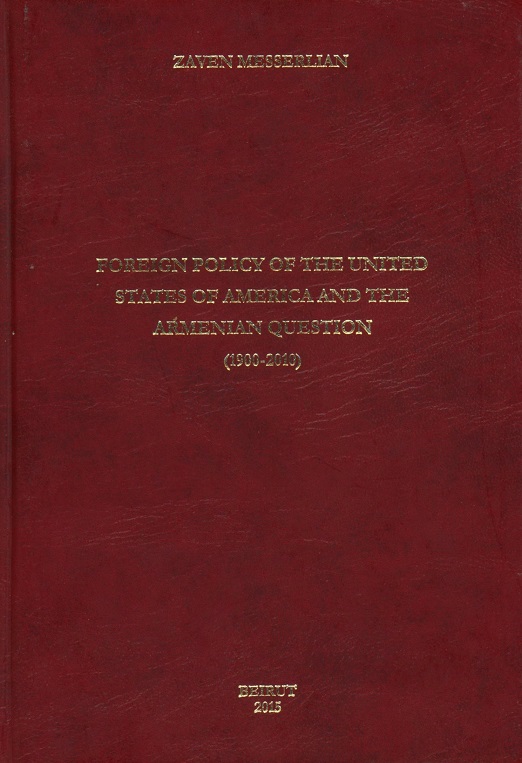 Rangement général
 | | Foreign policy of the United States of America and the Armenian question (1900-2010) |
| Titre : | Foreign policy of the United States of America and the Armenian question (1900-2010) / auteur(s) : Zaven M. MESSERLIAN - |
|---|
| Editeur : | Zaven Messerlian |
|---|
| Année : | 2015 |
|---|
| Imprimeur/Fabricant : | Chemaly & Chemaly - Beirut, Lebanon |
|---|
| Description : | 17 x 24 cm, 157 pages, Index pages 155-157 |
|---|
| Collection : | |
|---|
| Notes : | Translated from Armenian into English by Maral O. Sarkissian Kaloustian |
|---|
| Autres auteurs : | |
|---|
| Sujets : | |
|---|
| ISBN : | |
|---|
| Lecture On-line : | non disponible |
|---|
Commentaire :A WORD BY THE AUTHORMy articles, in Armenian, about the Foreign Policy of the United States of America and the Armenian Question were published in stages. The first of these which encompassed the time period of 1900-1975, was published as a case study, in the Haigaizyan Armenological Review, editor Dr. Yervant H. Kassouni volume 6, (1977-1978) pp. 71-104. The second article, about the same subject, covering the time period of May 1977 to May 1992, was again published in the Haigazyian Armenological Review, editor, Father Antranig Granian, volume 12, 1992, pp. 107-144. The editor in charge of my article was member of said Review, Mr. Levon Vartan. The third of my articles dealing with the same subject was published in the" Ararad daily 2003 Extra' edition, with Mr. Aharon Shekherdemian as editor, pp. 81-94. The fourth article dealing with the time period of May 22, 2002 to December 2009, was unpublished.
Since these articles have been published in one book, I have seen fit to divide my articles into four chapters, basing these not on the dates of publications but on a chronological order of events such as those happening during the presidency of Woodrow Wilson, the aftermath of his presidency and his successor, the Second World War, the onset of the Cold War, the onset of the relaxation of that tense period, the days following the fiftieth commemoration of the Armenian Genocide, then following the events during the presidencies of Carter, Reagan, George Bush, the independence of Armenia, to presidents Clinton, George Bush Jr. and Barack Obama and the events coinciding their time in office.
When I mention the Armenian Question, it is a collective term. By that I mean, the Genocide perpetrated against the Armenians, and the efforts to have the world acknowledge it, to these many years, the case of the territories wrenched from Armenia, still unresolved, the critical condition of the Karabagh region all difficulties that entail, the political and congressional stances, together with the Armenian, American and Turkish reactions to these matters.
Certain additions were included for the time period of 1920-1927, as well as correcting certain errors in proper names and words, when the articles were published in book form, in Armenian, under the tide Amerigayi Miatsyal Nabanknerou Ardakin Kaghakaganoutioune yev Haygagan Hartse (1919-2009), in Beirut in 2010 by the Sipan printing press. The book was sponsored and published by the Garbis Nazarian Fund.
The present book, published in English, is translated by Mrs. Maral Sarkissian Kaloustian, and is published by my former student, benefactor Mr. Raffy Manoukian (London), to whom we offer our thanks. |
519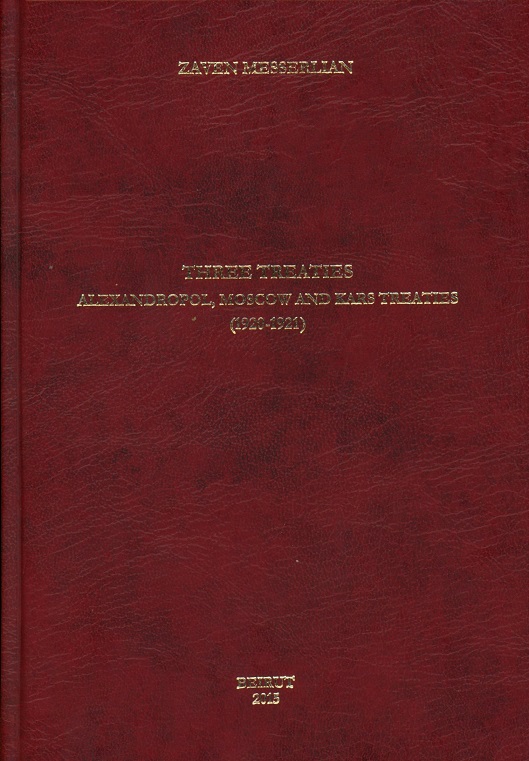 Rangement général
 | | Three treaties - Alexandropol, Moscow ans Kars treaties ( 1920-121 ) |
| Titre : | Three treaties - Alexandropol, Moscow ans Kars treaties ( 1920-121 ) / auteur(s) : Zaven M. MESSERLIAN - |
|---|
| Editeur : | Zaven Messerlian |
|---|
| Année : | 2015 |
|---|
| Imprimeur/Fabricant : | Chemaly & Chemaly - Beirut, Lebanon |
|---|
| Description : | 17 x 24 cm, 190 pages, Index pages 187-190 |
|---|
| Collection : | |
|---|
| Notes : | Translated from Armenian into English by Maral O. Sarkissian Kaloustian |
|---|
| Autres auteurs : | |
|---|
| Sujets : | |
|---|
| ISBN : | |
|---|
| Lecture On-line : | non disponible |
|---|
Commentaire :Author's Note to the Armenian EditionThe Armenian nation lost its statehood in Greater Armenia in the year 1045. It regained its status on part of this territory in the year 1918. Armenians still living in what is today known as Western Armenia (Eastern Turkey) were purged en masse during World War 1 by a systematic Genocide, perpetrated by the Ottoman Government. Those who were able to reach the modern day Armenia were threatened yet again by the Turkish state, but the battle of Sartarabad in 1918 stayed the final draw to purge them entirely. Thus modern day Armenia was created, on an area one-tenth of its past territories. This area was decided on by twists and turns of political machinations imposed upon Armenia. The three treaties which decided the geographical boundaries of Modern Day Armenia are: 1) The Treaty of Alexandropol (modern day Gumru) between the representatives of Armenia and Turkey, 2)The Treaty of Moscow, between Russia and Turkey, and 3) The Treaty of Kars, between the three Transcaucasian Soviet republics of Armenia, Georgia and Azerbaijan, and Turkey. This book explains in detail the role of the Great powers in exploiting the Armenian case, from 1914-1920, and brings to light all available data from 1920-1921 and the events preceding it, which culminated in the present boundaries of the State of Armenia. Chapters of this book were published in Armenian media before being compiled into this book. The chapter entitled The Exploitation of the Armenian Question by the Great Powers, 1914-1920 was published in Shirag monthly (Beirut, Lebanon, Ed: Mr Onnig Sarkissian under the auspices of Tekeyan Cultural Union), April 1974 issue, 15th year, No. 4, p.49-63; The Armenian-Turkish Conflict and the Treaty of Akxandropol (Gumru) 1920, in January-March 1978 issue, No. 1-3, p.31-62; and The Evolution of the Armenian Question, during the conferences of London and Moscow in the 5th volume Haiga^an Institute of Armenological Review in 1974, edited by Yervant H. Kassouni, p.9-37. All articles are in Armenian. These three articles have been re-edited and re-written with minor additions. As for the chapter entitled Treaty ofKars, 1921, which had not been published before, it has finally found its niche and added to the other chapters to complete diis book, edited by Onnig Sarkissian. At the end of the book, in the section of addendums, we have given die texts of the treaties of Alexandropol, Moscow and Kars, taking them from authentic sources. Author's Note to the English Edition
The English edition of my book was translated from the Armenian edition of my book by Mrs. Maral O. Sarkissian Kaloustian. Special care was done to give the quotations in their original English, for non-Armenian sources. The translation and printing of this book was sponsored by my former student, benefactor, Mr. Raffy Manoukian, to whom I offer my thanks. |
|
